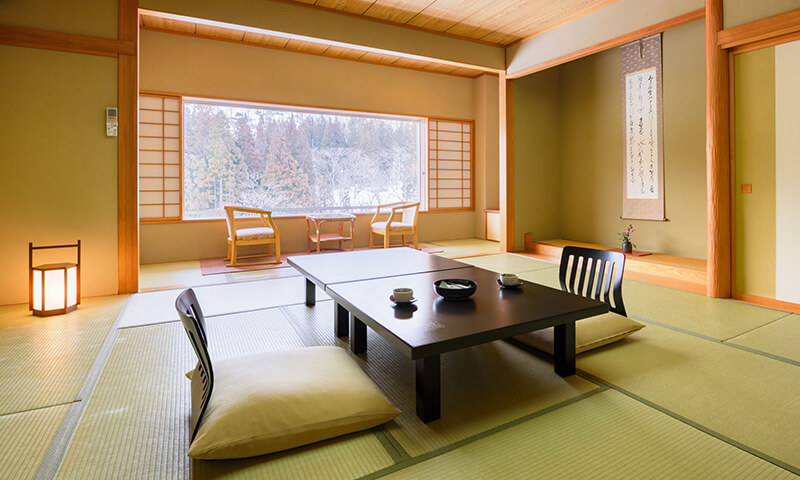
Tatami mats
In an era where sustainability and environmental consciousness are at the forefront of many homeowners’ minds, tatami mats stand out as an eco-friendly flooring option. These traditional Japanese mats, made from natural materials, offer numerous environmental benefits while enhancing the aesthetic and comfort of your home. In this blog, we will explore the sustainable aspects of tatami mats, their benefits for indoor air quality, and how they contribute to a healthier living environment.
Sustainable Materials and Production
Tatami mats are primarily made from natural, renewable materials. The core, traditionally composed of rice straw, is a byproduct of rice farming, making it a sustainable resource. The surface layer, woven from soft rush grass (Igusa), is also a renewable material that grows abundantly in Japan.
The production process of tatami mats is environmentally friendly. The cultivation of rice and rush grass requires minimal chemical inputs compared to many other crops. Additionally, the traditional hand-weaving techniques used to create tatami mats have a low carbon footprint, as they rely on skilled craftsmanship rather than industrial machinery.
Benefits for Indoor Air Quality
One of the standout features of tatami mats is their ability to improve indoor air quality. The natural materials used in tatami mats have several properties that contribute to a healthier indoor environment:
- Humidity Regulation: Tatami mats naturally absorb and release moisture, helping to regulate indoor humidity levels. This property is particularly beneficial in humid climates, where excessive moisture can lead to mold growth and poor air quality.
- Air Purification: The rush grass used in tatami mats has natural air-purifying qualities. It can absorb pollutants and odors, contributing to cleaner indoor air. This is especially valuable in homes located in urban areas with higher levels of air pollution.
- Hypoallergenic: Tatami mats are hypoallergenic, making them an excellent choice for individuals with allergies or sensitivities. Unlike synthetic carpets, tatami mats do not harbor dust mites or other allergens, promoting a healthier living environment.
Reducing Environmental Impact
Choosing tatami mats over synthetic flooring options can significantly reduce your home’s environmental impact. Here are some ways tatami mats contribute to sustainability:
- Biodegradability: Tatami mats are biodegradable, meaning they can decompose naturally without harming the environment. At the end of their life cycle, tatami mats can be returned to the earth, contributing to soil health.
- Low Carbon Footprint: The production and transportation of tatami mats have a relatively low carbon footprint compared to synthetic flooring materials. The use of local, renewable resources and traditional manufacturing techniques further minimizes their environmental impact.
- Longevity and Durability: Tatami mats are durable and can last for many years with proper care. This longevity reduces the need for frequent replacements, minimizing waste and resource consumption.
Integrating Tatami Mats into Sustainable Living
Incorporating tatami mats into your home is a step towards sustainable living. Here are some tips on how to integrate tatami mats into various spaces:
- Eco-Friendly Bedrooms: Replace conventional carpets or synthetic rugs in your bedroom with tatami mats. Pair them with natural fiber bedding and furniture to create a harmonious and sustainable sleeping environment.
- Green Living Rooms: Use tatami mats to define a sitting or meditation area in your living room. Complement the mats with eco-friendly furniture and decor made from reclaimed or sustainably sourced materials.
- Sustainable Home Offices: Create a dedicated workspace with tatami mats to enhance comfort and reduce environmental impact. Add natural lighting, energy-efficient electronics, and plants to complete your eco-friendly office.
Care and Maintenance for Sustainability
Proper care and maintenance are essential to maximize the lifespan and sustainability of tatami mats. Here are some eco-friendly tips for maintaining your tatami mats:
- Natural Cleaning Solutions: Use natural cleaning solutions, such as diluted vinegar or baking soda, to clean your tatami mats. Avoid harsh chemicals that can damage the natural fibers and harm the environment.
- Regular Ventilation: Ensure proper ventilation in rooms with tatami mats to prevent mold and mildew growth. Open windows and use fans to maintain good air circulation.
- Seasonal Maintenance: Rotate and air out your tatami mats seasonally to prevent wear and ensure even usage. This practice helps extend the life of the mats and maintains their structural integrity.
Conclusion
Tatami mats offer a sustainable and eco-friendly flooring option that enhances the aesthetic and comfort of your home. Made from natural, renewable materials, tatami mats contribute to better indoor air quality and a healthier living environment. By choosing tatami mats, you are making a conscious decision to reduce your environmental impact while embracing the timeless beauty and functionality of this traditional Japanese flooring. Integrate tatami mats into your home to enjoy the benefits of sustainable living and create a space that reflects your commitment to environmental responsibility.




